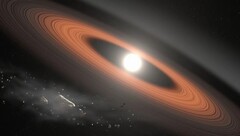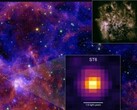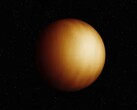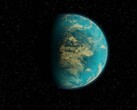What would happen to our beloved planet when the sun dies? Astronomers have captured what could be the fate of the Earth when its star reaches the end of its life, and it is not reassuring.
The scientists spotted a white dwarf LSPM J0207+3331 in the Triangulum constellation using the W.M. Keck Observatory. The star, located about 145 light-years away from the Earth, bore the clearest-ever chemical evidence of planetary debris.
LSPM J0207+3331’s hydrogen-rich atmosphere contained 13 heavy elements, including iron, nickel, and magnesium. These elements did not originate in the star but came from a planet that once orbited it, but was ripped apart. It was the highest number of planetary elements ever found in a white dwarf.
A plant’s core, stripped and consumed
The astronomers found parallels between the destroyed planet and the Earth. In fact, the late world was a more extreme version of the planet that we inhabit, with its dense metallic core and rocky mantle. They estimate that the planet was about 200 km wide and that 55 percent of its total mass was concentrated in its core, about double the Earth’s ratio. In comparison, Mercury has a core mass of 70 percent.
The researchers also estimate that the planet was “recently” consumed by the LSPM J0207+3331. This is because the elements from the late planet still lingered on the star’s outer layer instead of sinking into the interior.
How did the unfortunate planet end up as the dead star’s meal? One of the researchers, John Debes of the Space Telescope Science Institute, suggests another celestial body caused an instability in the star system long after its death. The trigger could have come from a Jupiter-sized body throwing smaller ones into unstable orbits and straight into the path of LSPM J0207+3331.
A cosmic autopsy pointing to the future of our own planet?
Analysing the outcome of fatal dead star-planet interactions gives us a glimpse into the internal chemistry of exoplanets because of the chemical footprint they leave behind. However, it can also indicate what could happen to the Earth when the sun dies billions of years from now.




















